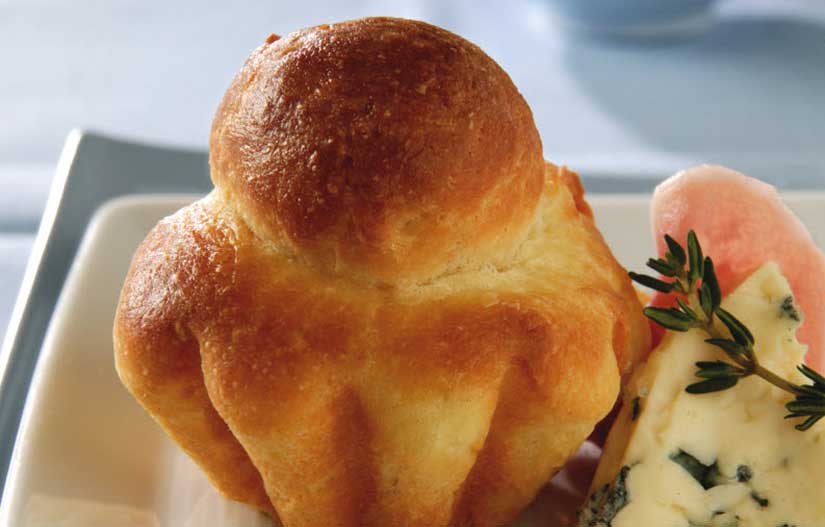Flavor

Among all product attributes, taste outranks any other product attribute each and every year in an annual survey conducted by the International Food Information Council Foundation. Taste or flavor is the deciding factor for consumers who purchase foods and beverages.1
Though eggs contain more than 100 volatile flavor components, the end results may be described as mild or bland. However, egg yolks contain fats that can carry and assist with the release of flavors of other ingredients within a formulation.2, 10 In fact, it is this ability to carry other flavors that helps create foods consumers recognize and enjoy since fats impact multiple rheological and sensory properties such as flavor, mouthfeel and texture.3 It is difficult for reduced fat or low fat versions of traditional formulations to imitate traditional product quality.3 For example, formulations with fat removed will release flavors like chocolate and vanilla more quickly than in a formula made with traditional levels of fat, “dramatically changing” the perceived flavor of a product.4
As one author states, for breads such as brioche and challah bread, made with whole eggs or yolks only, “the addition of eggs makes both doughs rich and flavorful; take out the eggs and they become other types of bread entirely.”5 In fact some types of baked goods, such as sponge cakes, typically have no other source of fat besides the egg, with the egg supplying both tenderness and flavor.6
Culinology lists dairy and egg based products as essentials: “Classically trained chefs have long considered these products fundamental elements in dishes that deliver a wide range of eating experiences, from breakfast to dinner, from snacks to beverages to entrees to desserts.”7
A series of studies designed to compare the functional and organoleptic performance of egg products to replacers found that egg flavor rarely stands alone as a product feature but that eggs react synergistically with the other ingredients to perfect the desired ‘sweet baked good flavor’8 as classic baking references would agree.6 Researchers state that within the applications they tested, mainly in baking, “flavor compounds develop that don’t occur when one of the main, traditional ingredients is removed.”8 Outside of baking, in applications such as custard, eggs lend a ‘sweet, rich flavor characteristic of frozen custard’ while substitutions are found wanting.9
Eggs when used as an ingredient contribute to the flavor of finished products and when whole eggs or yolks are used, the lipids within enhance the eating experience.3 In general, fats such as those contained in whole eggs and egg yolk influence rheological properties and sensory characteristics such as flavor, mouthfeel and texture.10
References
- International Food Information Council Foundation Annual Food and Health Survey. http://www.foodinsight.org/press-releases/survey-nutrition-information-abounds-many-doubt-food-choices (accessed May 16, 2017)
- Stadelmen WJ and Cotterill OJ. (1995). Egg Science and Technology, Fourth Edition, Haworth Press, Inc., New York, USA
- Garcia V et al. (2015). Development and characterization of a new sweet egg-based dessert formulation, International Journal of Gastronomy and Food Science, Volume 2, Issue 2, pp. 72-82
- Texture and Mouthfeel: Making Rheology Real, Marsilli, R, 1993, Weeks Publishing Company, Food Product Design http://archive.is/Xd8GU (accessed May 17, 2017)
- Ruhlman M. (2014). Egg: A culinary exploration of the world’s most versatile ingredient, Ruhlman Enterprises, Inc., Little Brown and Company, New York, USA
- Pyler EJ and Gorton LA. (2010). Baking Science & Technology, Fourth Edition, Volume 1, Sosland Publishing Co., Kansas City, Missouri, USA
- Cousminer. (2017). Culinology® The intersection of culinary art and food science, Research Chefs Association, John Wiley & Sons, Inc., Hoboken, New Jersey, USA
- Munday E, Werblin L and Deno K. (2017). Yellow Batter Cake Application Research: Comparing the Functionality of Eggs to Egg Replacers in Yellow Batter Cake Formulations, CuliNex, LLC, Seattle, USA
- Munday E, Werblin L and Deno K. (2017). Frozen Custard Application Research: Comparing the Functionality of Eggs to Egg Replacers in Frozen Custard Formulations, CuliNex, LLC, Seattle, USA
- Vaclavik V, Christian E. (2007). Essentials of Food Science, Springer Science & Business Media
